Introduction
In the United States of America, we are a people at war with the world and ourselves
 June 2022 / Gary David Ghirardi & Various Sources / NNOMY - It is the summer of 2022 and the country is reeling with the school shooting of 19 LatinX children in an elementary school in Texas. Multiple shootings before and after are all added together with un-answered questions as to the root causes on the nightly news while the spectacle of it all to the millions of viewers becomes another kind of murder against our collective imaginations.
June 2022 / Gary David Ghirardi & Various Sources / NNOMY - It is the summer of 2022 and the country is reeling with the school shooting of 19 LatinX children in an elementary school in Texas. Multiple shootings before and after are all added together with un-answered questions as to the root causes on the nightly news while the spectacle of it all to the millions of viewers becomes another kind of murder against our collective imaginations. The reality of what is wrong is invisible in plain sight in a country experiencing endless wars. internally and externally, that define a culture immersed in a “cultural militarization."
We only have to ask ourselves to encompass what such a concept could mean and then we can start collecting the pieces that are all around us, in our politics, our foreign policy, all the endless enemies that we are taught to hate, foreign and domestic, that end up aligning our people to submit to our endless wars.
Some of our wars are engaged by proxy countries funded by money we provide to them as allies who are then directed to buy the weapons we manufacture and sell them. The money provided is often represented as foreign aid and assistance or is owed back to us again as loans.
In our national production of movies, television series and war based video gaming, our imaginations are stoked with militarized or securatized entertainments imposed by consultants from military contractors and the Pentagon itself all folded into each other like the batter of a cake that we readily consume believing it is necessary to do so for our safety and security.
We now have military conceived programs in our public schools. Just look it up in your STEM programs. There you will find Raytheon sponsored Science Technology Engineering & Math programs having children making rockets and robots in your kid’s fourth grade class while for their governments they manufacture weapons systems and robotic systems for soldiers for future wars.
But hey, doesn’t that ensure a good job for their futures?
A Few Good “Antiwar” Teachers
We have been told by a few good teachers… maybe a few with antiwar tendencies... that there is not much time to pull together a lesson plan on a significant historical day in a normal classroom where it might be appropriate to introduce a lesson into a social studies class, maybe outside the textbook where it is not addressed for, let’s say… the Vietnam war and the Peace movement that surrounded that war.
It might be appreciated to have some simple documents that can serve the purpose of covering events in American or World History to shine a critical light on the wars and the indoctrination that justifies those wars to give students a fuller perspective on how these conflicts emerge.
Teachers in most school districts go outside the official lessons they are expected to teach with much trepidation but not all school districts are alike, as are not all regions of the country.
It is important to try.
In a culture of incessant messaging for commercial products, including appeals to students to become soldiers, all is fair in love and commerce. When students are subjected to appeals to become involved as combatants as soldiers in military services by offers from military recruiters in their schools, solicited with educational grants, benefits and joining bonuses, it is justifiable to help them understand the outcomes for the many who accepted that offer in the histories they are studying including the impacts that “service” had on many lives thereafter.
Below are materials found and assembled that are useful resources suitable as teaching aids to educate high school students about our wars, the industries that support them and the impact of how cultural militarism within the United States has on our day to day lives in our education, our entertainment and recreational offerings and how we are formed as citizens to view the rest of the world and our privileged place in it.
Power Point Video: For High School Students - Notes and Images From the Vietnam War
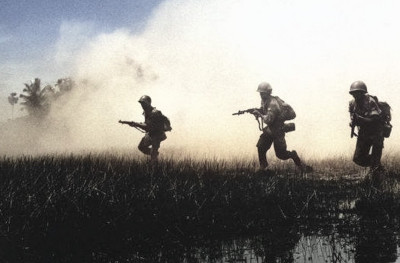 Jill Godmilow - "Here's a film for high school students and their teachers about the history of the Viet Nam War, composed of just photographs from that war, narration and, to help us through a damned disheartening story, lots of the Bach Suite for Solo Cello #1 in G. The film is 45 minutes long––perfect for classroom use and repeated screenings by students on their own. It's my response to the flawed Ken Burn/Lynn Novick 18-hour PBS series, The Vietnam War... too long for the classroom and failing in many ways as a useful account of the tragic Viet Nam war. It’s free to stream or download the film from this website, so teachers, help yourselves. I’ve also provided a curriculum, produced by the Zinn Education Project’s Rethinking Schools for teaching this film, and some additional useful writings for understanding the Viet Nam War. I recommend that teachers warn their students that the film is highly critical of the Viet Nam War. Teachers should also warn students in advance that this material can be upsetting. But I believe young adults can, and must, grapple with this grim history and the presence of this war, in order to avoid repeating it."
Jill Godmilow - "Here's a film for high school students and their teachers about the history of the Viet Nam War, composed of just photographs from that war, narration and, to help us through a damned disheartening story, lots of the Bach Suite for Solo Cello #1 in G. The film is 45 minutes long––perfect for classroom use and repeated screenings by students on their own. It's my response to the flawed Ken Burn/Lynn Novick 18-hour PBS series, The Vietnam War... too long for the classroom and failing in many ways as a useful account of the tragic Viet Nam war. It’s free to stream or download the film from this website, so teachers, help yourselves. I’ve also provided a curriculum, produced by the Zinn Education Project’s Rethinking Schools for teaching this film, and some additional useful writings for understanding the Viet Nam War. I recommend that teachers warn their students that the film is highly critical of the Viet Nam War. Teachers should also warn students in advance that this material can be upsetting. But I believe young adults can, and must, grapple with this grim history and the presence of this war, in order to avoid repeating it."
It’s free to stream or download the film by clicking on the link below:
Book: War and Moral Injury: From Sean Levine’s “Legal War, Sin, and ‘Moral Injury’ in the Age of Modern Warfare” - A Reader
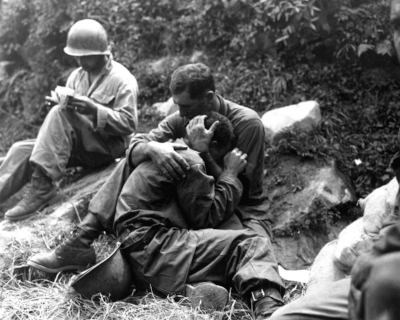 Multiple Contributors - "What do we need? We need rituals in which war veterans and civilian citizens work together to mutually own war trauma. We need contexts in which war veterans can tell their stories without the risk of being “shut down” because those listening will not hear them out to the bitter, painful end. We need citizens, pastors, priests, therapists, and others who will not argue with a warrior’s sense of moral guilt, spiritual taint, soul-death, emotional numbness, and emotional rage by waving flags, spouting patriotic nonsense, and appealing to just causes and justified killing in order to deflect the moral evil of America’s wars. We need an American society that looks down at its collective hands and sees blood; not only on the warriors, but on the hands of every citizen and non-citizen living within the protection of America’s military.... We need to stop telling our warriors they have nothing to be ashamed of and start listening to their shame, their guilt, their loss, their inner emptiness. We do not listen to such tales because they threaten our illusions and assault our easy-won comfort, but we should listen, and in listening, we should help carry, own, share, and grieve rather than deny the burdens of war. "
Multiple Contributors - "What do we need? We need rituals in which war veterans and civilian citizens work together to mutually own war trauma. We need contexts in which war veterans can tell their stories without the risk of being “shut down” because those listening will not hear them out to the bitter, painful end. We need citizens, pastors, priests, therapists, and others who will not argue with a warrior’s sense of moral guilt, spiritual taint, soul-death, emotional numbness, and emotional rage by waving flags, spouting patriotic nonsense, and appealing to just causes and justified killing in order to deflect the moral evil of America’s wars. We need an American society that looks down at its collective hands and sees blood; not only on the warriors, but on the hands of every citizen and non-citizen living within the protection of America’s military.... We need to stop telling our warriors they have nothing to be ashamed of and start listening to their shame, their guilt, their loss, their inner emptiness. We do not listen to such tales because they threaten our illusions and assault our easy-won comfort, but we should listen, and in listening, we should help carry, own, share, and grieve rather than deny the burdens of war. "
Source: https://www.warandmoralinjury.org/
Book: Unconventional Combat: Intersectional Action in the Veterans’ Peace Movement
 Michael Messner - Unconventional Combat illuminates the generational transformation of the U.S. veterans’ peace movement, from one grounded mostly in the experiences of White men of the Vietnam War era, to one increasingly driven by a younger and much more diverse cohort of “post-9/11” veterans. Michael Messner uses participant observation with two organizations (Veterans For Peace and About Face) and interviews with older men veterans as the backdrop for the book’s main focus, life-history interviews with six younger veterans—all people of color, three of them women, one a Native Two-Spirit person, one a genderqueer non-binary person. The book traces these veterans’ experiences of sexual and gender harassment, sexual assault, racist and homophobic abuse during their military service (some of it in combat zones), centering on their “situated knowledge” of intersecting oppressions. As veterans, this knowledge shapes their intersectional praxis, which promises to transform the veterans’ peace movement, and provides a connective language through which veterans’ peace activism links with movements for racial justice, stopping gender and sexual violence, addressing climate change, and building anti-colonial coalitions. This promise is sometimes thwarted by older veterans, whose commitment to “diversity” often falls short of creating organizational space for full inclusion of previously marginalized “others.” Intersectionality is the analytic coin of today’s emergent movement field, and the connective tissue of a growing coalitional politics. In Unconventional Combat, we meet veterans who are part of this larger shift in the social movement ecology. Together, they contribute a critical understanding of war and militarism to progressive coalitions.
Michael Messner - Unconventional Combat illuminates the generational transformation of the U.S. veterans’ peace movement, from one grounded mostly in the experiences of White men of the Vietnam War era, to one increasingly driven by a younger and much more diverse cohort of “post-9/11” veterans. Michael Messner uses participant observation with two organizations (Veterans For Peace and About Face) and interviews with older men veterans as the backdrop for the book’s main focus, life-history interviews with six younger veterans—all people of color, three of them women, one a Native Two-Spirit person, one a genderqueer non-binary person. The book traces these veterans’ experiences of sexual and gender harassment, sexual assault, racist and homophobic abuse during their military service (some of it in combat zones), centering on their “situated knowledge” of intersecting oppressions. As veterans, this knowledge shapes their intersectional praxis, which promises to transform the veterans’ peace movement, and provides a connective language through which veterans’ peace activism links with movements for racial justice, stopping gender and sexual violence, addressing climate change, and building anti-colonial coalitions. This promise is sometimes thwarted by older veterans, whose commitment to “diversity” often falls short of creating organizational space for full inclusion of previously marginalized “others.” Intersectionality is the analytic coin of today’s emergent movement field, and the connective tissue of a growing coalitional politics. In Unconventional Combat, we meet veterans who are part of this larger shift in the social movement ecology. Together, they contribute a critical understanding of war and militarism to progressive coalitions.
Source: https://www.unconventionalcombat.com/
Article: Mass Shootings are a Byproduct of a Militarized Society
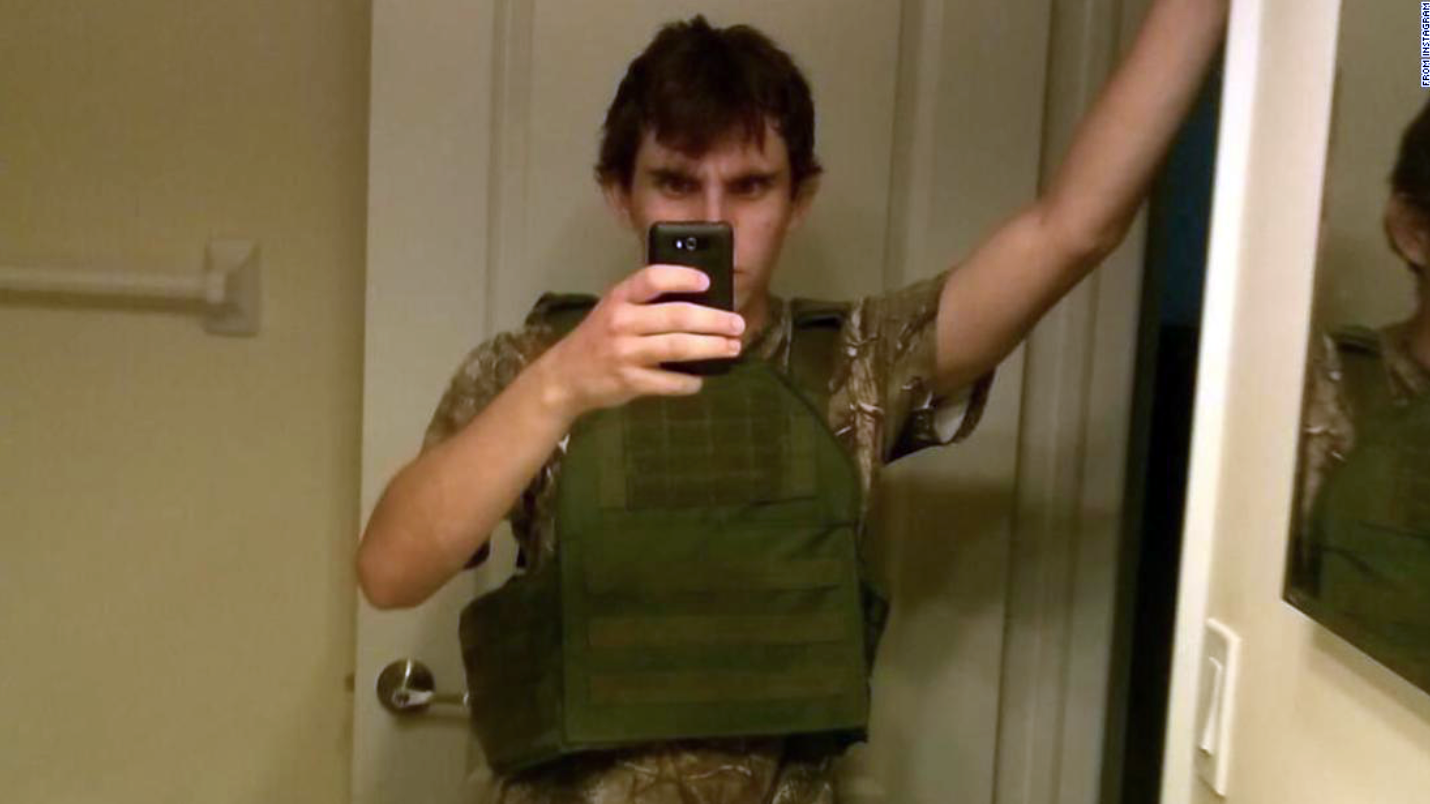 Elliot Swain - JROTC was founded in 1916 to prepare youth for enlistment in the First World War. In addition to marksmanship, it teaches military history, military protocol, and physical fitness. While many proponents of the program insist it is not meant for recruitment, JROTC falls under the Pentagon’s recruitment budget. Between 30 and 55 percent of former JROTC students eventually enlist. JROTC also inculcates high school students with the dogmas of the US war machine. In his book Military Recruiting in the War Machine, Pat Elder shows how JROTC textbooks justify the devastating CIA-orchestrated coup against Salvador Allende in Chile. Elder scours these textbooks and parses a consistent theme: the unquestionable moral rectitude of US military might.
Elliot Swain - JROTC was founded in 1916 to prepare youth for enlistment in the First World War. In addition to marksmanship, it teaches military history, military protocol, and physical fitness. While many proponents of the program insist it is not meant for recruitment, JROTC falls under the Pentagon’s recruitment budget. Between 30 and 55 percent of former JROTC students eventually enlist. JROTC also inculcates high school students with the dogmas of the US war machine. In his book Military Recruiting in the War Machine, Pat Elder shows how JROTC textbooks justify the devastating CIA-orchestrated coup against Salvador Allende in Chile. Elder scours these textbooks and parses a consistent theme: the unquestionable moral rectitude of US military might.
School shootings in the United States are committed using guns designed for military purposes. Military institutions provide ideological ammunition for mass killings through JROTC and other recruitment tactics. Bush’s No Child Left Behind law required public schools to provide military recruiters with access to contact information for every student, and Obama’s replacement law, the Every Student Achieves Act, left this provision in place. As long as our schools and other social institutions are saturated with the military, we cannot treat violence at home and acts of foreign warfare as distinct, hermetically sealed spheres. The horrific bloodshed in Florida is of a piece with that of Taqba. We cannot ask “how can this happen?” in the former case while accepting the latter as a matter of course. We must banish the logic of war from every corner of our society.
Source: https://www.codepink.org/mass_shootings_are_a_byproduct_of_a_militarized_society
Article: 100 percent (Militarized) American
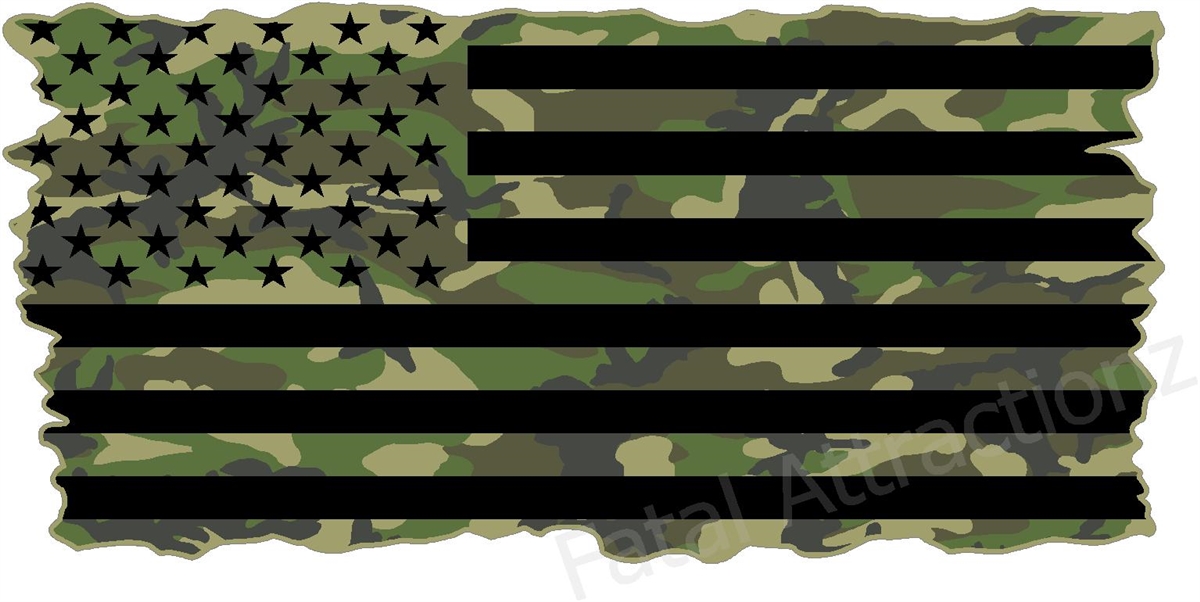 Maximilian Forte - Rick is a midlevel manager in a financial services company in New York City. Each day he commutes from Weehawken, New Jersey, a suburb only a stone’s throw from the Big Apple, where he lives with his wife, Donna, and his teenage son, Steven. A late baby boomer, Rick just missed the Vietnam era’s antiwar protests, but he’s been against the war in Iraq from the beginning. He thinks the Pentagon is out of control and considers the military-industrial complex a danger to the country….
Maximilian Forte - Rick is a midlevel manager in a financial services company in New York City. Each day he commutes from Weehawken, New Jersey, a suburb only a stone’s throw from the Big Apple, where he lives with his wife, Donna, and his teenage son, Steven. A late baby boomer, Rick just missed the Vietnam era’s antiwar protests, but he’s been against the war in Iraq from the beginning. He thinks the Pentagon is out of control and considers the military-industrial complex a danger to the country….
Rick believes that, despite its long reach, the military-industrial complex is a discrete entity far removed from his everyday life….
So wake up with Rick and sample a single autumn morning as the alarm on his Sony (Department of Defense contractor) clock interrupts his final dream of the night. Donna is already up and dressed in fitness apparel by Danskin (a Pentagon supplier that received over $780,000 in DoD dollars in 2004 and another $456,000 in 2005) and Hanes Her Way (made by defense contractor and cake seller the Sara Lee Corporation, which took in over $68 million from the DoD in 2006). Committed to a healthy lifestyle, she’s wearing sneakers from (DoD contractor) New Balance and briskly jogging on a treadmill made by (DoD contractor) True Fitness Technology.
Article: The Military-Industrial Complex is made up of tens of thousands of contributors spanning the globe
Military-Industrial Complex | Information - For the period of ten years (2006-2016) this website catalogued the various contracts given by the United States government to the equally-various players of the defense industry. This page captures the complete list of names - many well-known, others not as much - that represent the hidden face of the Military-Industrial Complex today. While we no longer track this information, this section stands as a testimony to the mighty cost of funding two major wars (Afghanistan and Iraq) which became the focus of three consecutive presidential terms (W.Bush, Obama, Trump).
Firms that have publicly-announced contracts with the United States Department of Defense are listed below in alphabetical order. Joint Ventures are appropriately identified by a 'JV' designation. Some companies may appear under slightly different names apart from their parent brand label (i.e. L-3 Communications).
Source: https://www.militaryindustrialcomplex.com/companies.php
Article: The Consensus Behind Militarism
 Jeff Cohen - I spent years as a political pundit on mainstream TV – at CNN, Fox News and MSNBC. I was outnumbered, outshouted, red-baited and finally terminated. Inside mainstream media, I saw that major issues were not only dodged, but sometimes not even acknowledged to exist.
Jeff Cohen - I spent years as a political pundit on mainstream TV – at CNN, Fox News and MSNBC. I was outnumbered, outshouted, red-baited and finally terminated. Inside mainstream media, I saw that major issues were not only dodged, but sometimes not even acknowledged to exist.
Today there’s an elephant in the room: a huge, yet ignored, issue that largely explains why Social Security is now on the chopping block. And why other industrialized countries have free college education and universal healthcare, but we don’t. It’s arguably our country’s biggest problem – a problem that Martin Luther King Jr. focused on before he was assassinated 45 years ago, and has only worsened since then (which was the height of the Vietnam War).
That problem is U.S. militarism and perpetual war.
In 1967, King called the United States “the greatest purveyor of violence in the world today” – and said, “A nation that continues year after year to spend more money on military defense than on programs of social uplift is approaching spiritual death.”
Nowadays MSNBC hosts yell at Fox News hosts, and vice versa, about all sorts of issues – but when the Obama administration expanded the bloody war in Afghanistan, the shouting heads at both channels went almost silent. When Obama’s drone war expanded, there was little shouting. Not at MSNBC, not at Fox. Nor at CNN, CBS, ABC or so-called public broadcasting.
Video: Why America’s police look like soldiers
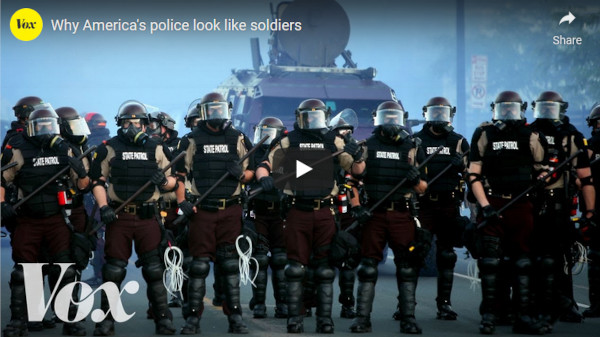 Jun 25, 2020 / Madeline Marshall / Vox - Across the country, Americans protesting racial injustice and police brutality — the overwhelming majority of them peacefully — have been met by police forces that look more like an army. Officers have shown up to protests with riot gear, armored trucks, and military rifles. And this isn’t new: The protests in Ferguson, Missouri, in 2014 saw a similarly militarized response from police. So where did police get all these weapons?
Jun 25, 2020 / Madeline Marshall / Vox - Across the country, Americans protesting racial injustice and police brutality — the overwhelming majority of them peacefully — have been met by police forces that look more like an army. Officers have shown up to protests with riot gear, armored trucks, and military rifles. And this isn’t new: The protests in Ferguson, Missouri, in 2014 saw a similarly militarized response from police. So where did police get all these weapons?
Over several decades, as part of the war on drugs, the US implemented policies intended to bring law enforcement and the military closer together. The most impactful of those, which began in 1990, is what’s now known as the 1033 Program — it allowed the military to loan its surplus equipment to law enforcement agencies. By the mid-1990s, local police departments across the US, including even university police, had acquired gear like armored trucks, automatic rifles, and grenade launchers.
Source: https://www.vox.com/2020/6/25/21303538/american-police-soldiers-1033-program
Article: The Pentagon Is Exploring Robots That Kill on Their Own — What Happens Next?
The Pentagon is currently exploring the use of robots that can deploy weapons without a human directive. The project aims to develop a “third offset strategy” that would put automated machines and robots on the battlefield, according to National Defense Magazine. One of the most notable use cases the Department of Defense is looking into is whether a robot pre-programmed with a specific mission could still fulfill its duties even if it’s disconnected from a human overseer.
Article: How to Counter Recruitment and De-Militarize Schools
 Feb 16, 2016 / David Swanson / davidswanson.org - U.S. military recruiters are teaching in public school classrooms, making presentations at school career days, coordinating with JROTC units in high schools and middle schools, volunteering as sports coaches and tutors and lunch buddies in high, middle, and elementary schools, showing up in humvees with $9,000 stereos, bringing fifth-graders to military bases for hands-on science instruction, and generally pursuing what they call "total market penetration" and "school ownership."
Feb 16, 2016 / David Swanson / davidswanson.org - U.S. military recruiters are teaching in public school classrooms, making presentations at school career days, coordinating with JROTC units in high schools and middle schools, volunteering as sports coaches and tutors and lunch buddies in high, middle, and elementary schools, showing up in humvees with $9,000 stereos, bringing fifth-graders to military bases for hands-on science instruction, and generally pursuing what they call "total market penetration" and "school ownership."
But counter-recruiters all over the United States are making their own presentations in schools, distributing their own information, picketing recruiting stations, and working through courts and legislatures to reduce military access to students and to prevent military testing or the sharing of test results with the military without students' permission. This struggle for hearts and minds has had major successes and could spread if more follow the counter-recruiters' example.
Source: https://www.filmsforaction.org/articles/how-to-counter-recruitment-and-demilitarize-schools/
Article: Dec. 16, 1965: Students Suspended for Anti-War Armbands
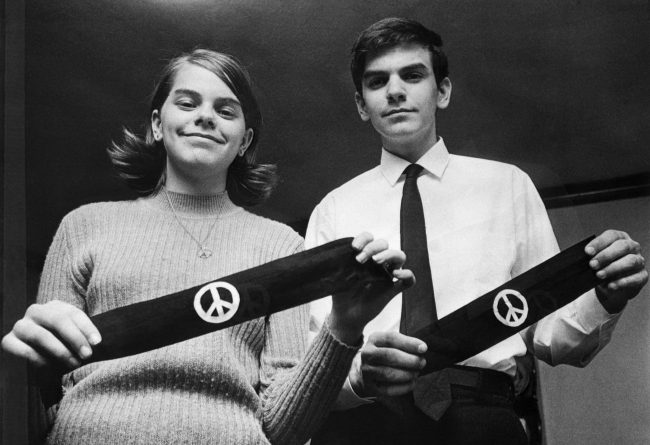 On Dec. 16, 1965 / Zinn Educational Project - A group of students — including organizer Bruce Clark (17 years old), Christopher Eckhardt (16 years old), John F. Tinker (15 years old), Mary Beth Tinker (13 years old), Hope Tinker (11 years old), Paul Tinker (8 years old) — wore black armbands to school to protest the war in Vietnam. The school board got wind of the protest and passed a preemptive ban. When the students arrived at school on December 16, they were asked to remove the armbands. When the students refused, they were sent home.
On Dec. 16, 1965 / Zinn Educational Project - A group of students — including organizer Bruce Clark (17 years old), Christopher Eckhardt (16 years old), John F. Tinker (15 years old), Mary Beth Tinker (13 years old), Hope Tinker (11 years old), Paul Tinker (8 years old) — wore black armbands to school to protest the war in Vietnam. The school board got wind of the protest and passed a preemptive ban. When the students arrived at school on December 16, they were asked to remove the armbands. When the students refused, they were sent home.
The students were suspended and told they could not return to school until they agreed to remove their armbands. Represented by the ACLU, five of the students and their families embarked on a four-year court battle that culminated in the landmark Supreme Court decision: Tinker v. Des Moines. On February 24, 1969, the Court ruled 7-2 that students do not “shed their constitutional rights to freedom of speech or expression at the schoolhouse gate.”
Source: https://www.zinnedproject.org/news/tdih/students-protest-war
Additional Resources for the Classroom
- Podcast: “I wanted to lay my rifle down.” – Hart Viges - March 23, 2022 - Courage to Resist
- Video: Before You Enlist - Multiple Sources - 2018 - NNOMY | AFSC | Telequest
- Video: Arlington West (Trailer) - Multiple Sources - Order information - 2011 - ArlingtonWestVideo
- Audio: Martin Luther King, "Why I Am Opposed to the War in Vietnam" - Anonymous - 2010
- Graphic Novel: Verax: The True History of Whistleblowers, Drone Warfare, and Mass Surveillance - Pratap Chatterjee - 2017
- Podcasts & More: Resources For Teaching the Post-9/11 Wars | 2021 | Watson Institute / Brown University
- Book: Teaching About the Wars | 2013 - 2020 | Rethinking Schools
- Book: A Young People’s History of the United States | 2021 | Zinn Education Project
- PDF: Researching Pop Culture and Militarism - 2020 - Selene Rivas | NNOMY
- PDF: Afghanistan and the U.S. - 2021 - Fabiola Cardozo | NNOMY
- PDF: Memorial Day Learning Resource - 2022 - NNOMY | Veterans For Peace Chapter 110 | Military Famlies Speak Out
- PDF: Understanding the Russia and Ukraine War Learning Resource | 2022 | NNOMY
- PDF: Teaching Note - We Are Not Your Soldiers - 2021 - World Can't Wait
Alternative Sites that offer Resources for Teaching about a) War & b) Peace in Classrooms & Communities
- Bill of Rights Institute: Students and the Anti-War Movement - https://billofrightsinstitute.org/essays/students-and-the-anti-war-movement
The Bill of Rights Institute teaches civics. We equip students and teachers to live the ideals of a free and just society. - Educators For Peace - https://educatorsforpeace.info
Welcome to the Educators for Peace website! This is the place where teachers find resources for teaching the realities of war and the prospects for peace in school! Resources are designed for time available for high school teachers to present lessons to compliment school textbooks. - Historians for Peace and Democracy: Teaching Resources - https://www.historiansforpeace.org/teaching-resources
U.S. Foreign Policy History and Resource Guide - Focuses on United States foreign policy and wars from a principled, peace-oriented perspective. Launched in October 2015, the website is sponsored by Historians for Peace and Democracy and the Peace History Society. - Rethinking Schools: Teaching About the Wars - https://rethinkingschools.org/books/teaching-about-the-wars
Teaching About the Wars breaks the curricular silence on the U.S. military engagement in the Middle East and Afghanistan. The articles and lessons in this volume explore “the realities of how we got here.” Even though the United States has been at war continuously since just after 9/11, sometimes it seems that our schools have forgotten.
| - Zinn Educational Project: Wars & Related Anti-War Movements - https://www.zinnedproject.org/themes/wars-related-anti-war-movementsThe Zinn Education Project promotes and supports the teaching of people’s history in classrooms across the country. Since 2008, the Zinn Education Project has introduced students to a more accurate, complex, and engaging understanding of history than is found in traditional textbooks and curricula.
- Northrop Grumman gifts $70,000 to area schools to enhance STEM opportunities | Rapid City Journal | 2022
https://rapidcityjournal.com/news/local/northrop-grumman-gifts-70-000-to-area-schools-to-enhance-stem-opportunities/article_c84b5816-c5dc-52b7-a9a3-fb76199cc027.html - Raytheon funding STEM learning initiatives for Colorado Springs schools | The Gazatte | 2021
https://gazette.com/business/raytheon-funding-stem-learning-initiatives-for-colorado-springs-schools/article_2905b87e-06f0-5529-84f8-50d46baa081d.html - Lockheed Martin To Fund Space Foundation STEM Programs at Huntsville, Alabama Schools | Space Foundation | 2021
https://www.spacefoundation.org/2021/10/27/lockheed-martin-to-fund-space-foundation-stem-programs-at-huntsville-alabama-schools-nov-3-5/ - Reputation laundering: weapons companies infiltrating schools to promote STEM education | Undue Influence | 2020
https://undueinfluence.substack.com/p/reputation-laundering-weapons-companies - Raytheon Technologies invests in new transformational STEM high school | Raytheon | 2020
https://raytheon.mediaroom.com/2020-08-18-Raytheon-Technologies-invests-in-new-transformational-STEM-high-school - Defense Contractors, Districts Partner to Improve STEM Education | Education Week | 2008 - 2019
https://www.edweek.org/teaching-learning/defense-contractors-districts-partner-to-improve-stem-education/2008/11 - Arms industry spends millions to promote brands in schools | Guardian | 2018
https://www.theguardian.com/world/2018/sep/01/arms-industry-spending-millions-normalise-weapons-in-schools
###
Revised: 01-01-2023

